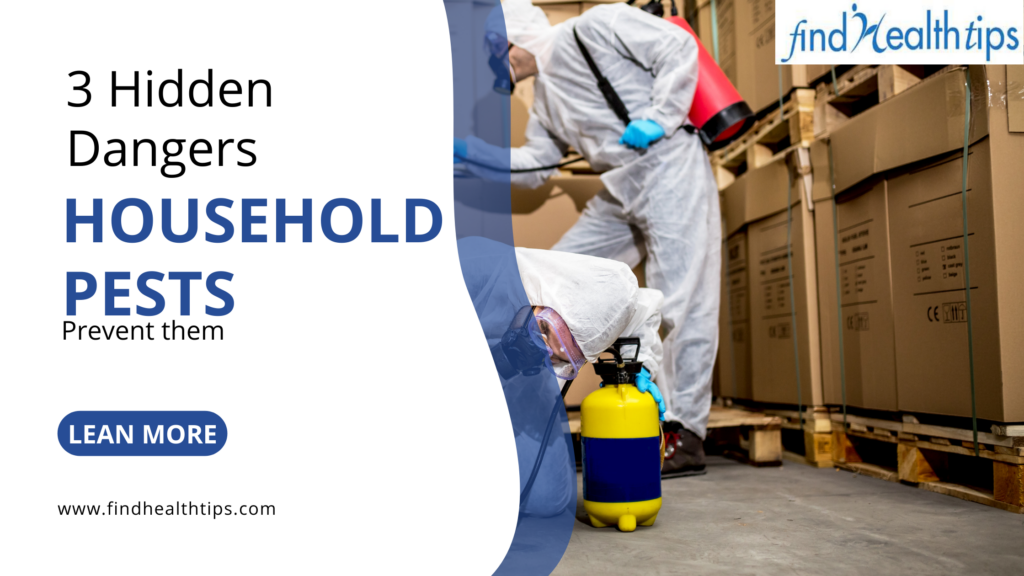Worldwide,rats and mice spread over 35 diseases, which can be spread to humans directly via the handling of rodents, through contact with feces, urine, saliva, or bites, according to the Centers for Disease Control and Prevention (CDC).
For those who happen to notice a pest in the house,understanding the health risks involvedand how to prevent them in the first place is essential in avoiding any health issues.
From the hidden dangers behind common pests like roaches and rodents, here’s what you should know — especially when it comes to implementing prevention measures.
The dangers of cockroaches
While cockroaches don’t bite, the United States Environmental Protection Agency (EPA) notes that the pests do carry bacteria—if deposited on food, this could pose a threat to human health as it can result in salmonella, staphylococcus, and streptococcus.
According to the World Health Organization (WHO), roaches “have been known to play a role as carriers of intestinal diseases,” as well, including dysentery and cholera.
Healthlinegoes on to further explainhow roaches can be a health concern, citing a 2012 study published in the journal Allergy, Asthma & Immunology Research, which deemed cockroaches as one of the most common sources of indoor allergies.
When preventing roaches from entering your home, Healthline recommends limiting the roaches’ access to food, water, and shelter.
This can include taking simple preventative measures, like keeping trash bins clean, keeping damp areas dry, and sealing any entry points to your home. Because roaches tend to thrive in damp and dark areas, ensuring that your home is clean is essential, while placing bait or traps (or even calling a professional when necessary) will further aid in avoiding any adverse health effects.
Rodent risks—more than just electrical damage.
Rodents are another all-too common household pest, with an impressive 14.8 million Americans having reported seeing mice or rats in their homes in 2019. Rodents, which include rats, mice, and even squirrels, can not only cause major damage to your home by wreaking havoc on electrical systems (and even increasing the risk of electrical fires), but the pests can also be a cause for concern when it comes to human health.
Hantavirus Pulmonary Syndrome, or HPS, is just one of several diseases that rodents can carry, and anyone who comes into contact with rodents that carry hantaviruses is at risk for infection, according to the CDC.
The CDC further notes that HPS can present with early symptoms that include fatigue, fever, and muscle aches in addition to headaches, dizziness, chills, and abdominal issues, while late symptoms include coughing and shortness of breath. Witha mortality rate of 38%, there’s no question that preventing rodents in the home is essential in avoiding such a disease.
For those seeking ways to prevent rodents in the home, doing so is similar to the process for preventing cockroaches, with sealing any potential entry points to your home a great way to start. From there, further eliminating entry to your home can be done by ensuring that trees and branches aren’t super close to the house, as rodents like squirrels and rats are known to be good climbers.
In addition to removing any food sources and placing traps accordingly, getting a professional involved is a great way to get tailored and highly rated pest control, which will prevent an infestation in the first place. Theinstallation of rodent repellent barriersis just one way to do just that, and will ensure your property (and your electrical wires) are properly protected.
Even flies pose a risk
In addition to roaches and rodents, houseflies can also be harmful to human health, with Penn State Extension noting that house flies are “strongly suspected of transmitting at least 65 diseases to humans,” including typhoid fever, anthrax, tuberculosis, and leprosy.
“Flies regurgitate and excrete wherever they come to rest and thereby mechanically transmit disease organisms,” the Penn State article goes on to explain, stating that flies “cannot breed in large numbers if their food sources are limited,” and recommendsusing four basic key principlesin taking preventative measures: sanitation, exclusion, non-chemical, and chemical methods.
That said, these can be done effectively by making use of window/door screens, thorough cleaning (like in the kitchen and trash bins, which are well-known for attracting flies), and using non-chemical methods (fly strips), or chemical solutions.
Encountering a household pest can be a stressful experience, especially if you’re unaware of preventative measures or the health risks that even the most common pests pose. By realizing the dangers that pests such as roaches, rodents, and flies can bring, taking action and preventing them from coming into the home is a great way to avoid any health issues.

